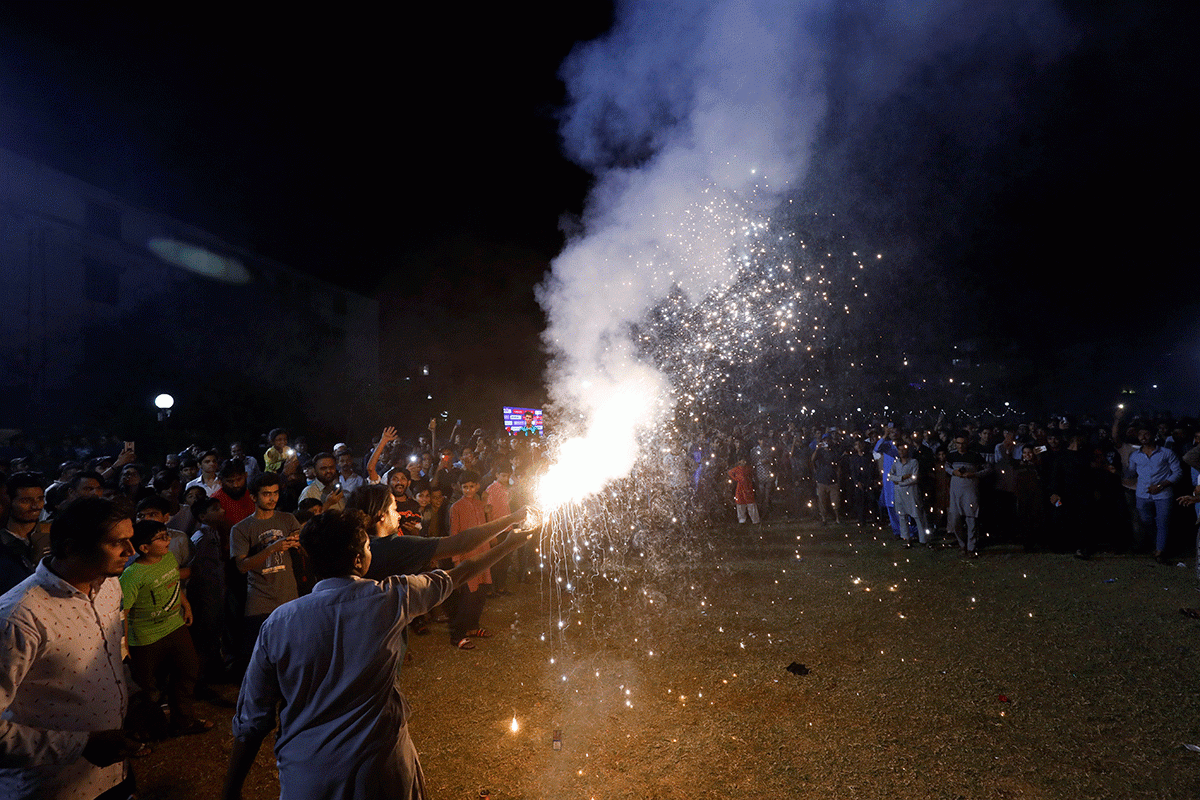
From Jazba Junoon to Dil Dil Pakistan: What goes into making the perfect cricket anthem
Anthems become special and only work to create impact if the audience has larger-than-life emotions attached to them
KARACHI:
Junaid Jamshed had that bittersweet voice that could calm bruised hearts on both sides of the fence. His naats would land in your conscience like a reminder to visit the holy sanctuary and ballads rested broken hearts by their soft rapture. His voice, however, had a third kind, the Dil Dil Pakistan effect I’d say. Who would have guessed that a singer who could barely harmonise back in the day would end up giving us a synth-heavy anthem for generations to come?
Shahi Hassan of Vital Signs once compared it to AR Rahman’s Ma Tujhe Salam, an anthem from Rahman’s album Vande Mataram that sent chills across the border and throughout the world. Hassan believed that it was just the love of the audience that drove Dil Dil Pakistan to such unimaginable heights, and had it been promoted on a greater scale by the state then perhaps the song would have been even grander.
But the song grew on people and the country. We saw the first cricket world cup come to Pakistan in 1992 and everyone thought the song was tailor-made for this moment. But the anthem itself had no direct link to the world cup – in fact, if anything the official anthem of the 1992 world cup was Who Rules the World.
The song was revamped in 2015, by Pakistan’s foremost musical talent including Strings and Atif Aslam as Phir Se Game Utha Den under the banner of Coke Studio but it couldn’t create the waves you’d expect an anthem to create.
One would have expected the cover of a relatively familiar melody to work well with the new tournament’s build-up but it simply didn’t connect despite the stars and heavy promotions. What then is the recipe for an ideal cricket anthem if not the best talent and heavy promotions?
In 1996 we were not only co-hosting the World Cup alongside India and Srilanka but we were also looking forward to winning the main title once again. With the likes of Wasim Akram, Javed Miandad, Ramiz Raja and Inzimam still in the squad, we were anticipating the momentum of 1992 to carry forward.
We thought we had it in us to do it once again and this time at home. To celebrate the homecoming of all teams and our chance at the world cup, Pakistan’s foremost boy band Junoon came up with the anthem featuring our cricket stars in the video.
The reason why Jazba Junoon was an instant hit and stayed with us for much later, particularly as a cricket anthem, had a lot more to it than just Salman Ahmed’s electrifying guitars and Ali Azmat’s huge voice. Yes, it was the kickass groove by Brian accompanied by the fact that both the musicians and the public had high hopes that they are going to actually fetch the cup, now that they had the rhythm and were also playing some of it at home.
As much as music is an act of the imaginative will, anthems become special and only work to create an impact if the audience has larger-than-life emotions attached to them. And the hope of winning alone isn’t enough of an emotion to unite under a melody because hope in a world tournament is that subdued feeling, the reason that keeps you interested in the tournament. Interested is the keyword here.
Strings’ Hai koi Hum Jaisa became really popular too and it had everything to do with how well Strings were doing in their early 2000s streak of kickass music.
While the 2003 world cup wave could have helped Strings lift that vibe, the song itself was appreciated because of how catchy it was. The world cup, on the other hand, had nothing to offer to us apart from Rawalpindi Express’ speed.
The Ali Zafar anthems for PSL could be considered in the same lineage as Hai Koi Hum Jaisa although Zafar’s Kishoresque voice adds filmy touches which often adds and sometimes takes away from a sports anthem.
So, we can easily say that Dil Dil Pakistan is our greatest anthem because it came out of nowhere and stayed forever, through Independence days and World Cups. Jazba Junoon is very much a cricket anthem that also finds a slot at every national celebration and kindergarten tableau. But nothing gets bigger than these two as cricket anthems, surprisingly, none of the anthems or tribute songs that came around our 2009 World Cup victory left an impact.
There’s nothing that can even be considered close to a good cricket anthem in the past 10 years, save for a few sparks by Peshawar Zalmi. If an anthem is, as we earlier discussed, a metamorphosis of emotions and music that is born out of that emotion then perhaps our 2022 World Cup campaign deserves a ballad written by Khalil ur Rehman Qamar and sung by Rahat Fateh Ali Khan?
Only this deadly combination of pain, anguish and reconciliation with our demons and desires can summarise what we just went through. Do you have someone better in mind?
Have something to add to the story? Share it in the comments below.
1719921789-0/dua-lipa-(1)1719921789-0-270x192.webp)














COMMENTS
Comments are moderated and generally will be posted if they are on-topic and not abusive.
For more information, please see our Comments FAQ